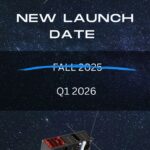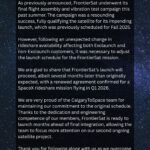CalgaryToSpace is the latest victim of foreign rideshare reliability, with the launch of FrontierSat being delayed from fall 2025 to Q1 2026.
The organization shared the announcement via social media on Oct 14, 2025, saying that the launch was altered due to an “unexpected change in rideshare availability affecting both Exolaunch and non-Exolaunch customers.”
The delay to launch and reliance on a foreign rocket launch provider furthers the need not just for sovereign launch within Canada but ultimately expanding the industry supply of rocket launches to match the ever-increasing demand for putting payloads into orbit. The CalgaryToSpace team confirmed a renewed agreement for a SpaceX rideshare mission flying in Q1 2026.
Created in 2020, CalgaryToSpace is a student-led organization based out of the Schulich School of Engineering at the University of Calgary. Their team has over 100 students, mostly undergraduates. FrontierSat will be deployed into orbit through Exolaunch’s EXOPod, a German-based CubeSatdeployment system.
Roughly the size of a clipboard (30 cm long), FrontierSat will orbit roughly 500km above the Earth’s surface as it studies the ionosphere and upper atmospheric winds, specifically a concept called STEVE (Strong Thermal Emission Velocity Enhancement), a rare light phenomenon that creates purple and green light in the night sky, similar to the aurora borealis. The planned lifecycle for the satellite is roughly seven years, with further service life based on solar activity.
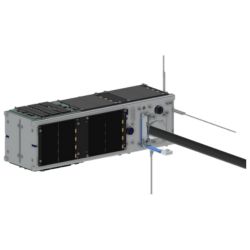
Studying STEVE will be possible through the MPI (Mini Plasma Imager), an instrument that will study plasma in Earth’s space environment and how it moves. As the University of Calgary shared in 2016, Jonathan Burchill, a researcher in the Department of Physics and Astronomy received a contract from the Canadian Space Agency in 2016 totaling $382,000 CAD to “design and test a prototype for a miniature version of a plasma/space instrument that measures winds and temperatures of charged particles in the Earth’s space environment.” Burchill and the University of Calgary received $500,000 in funding from the Canadian Space Agency in 2023 for the IMAGER (Innovative Measurements of Auroral Geophysics for Education and Research) initiative.
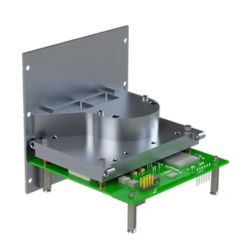
Also included on the FrontierSat payload is a Deployable Composite Lattice Boom, which extends from the satellite to typically carry systems like antennas or solar panels. This iteration of the boom won’t have any equipment attached, however there is a camera above the arm which enables the team to capture images of space and monitor the satellite.
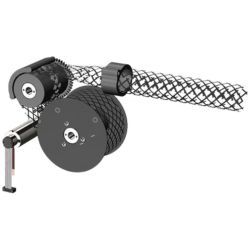
As CBC reported in August 2025, the largest non-technical challenge that the CalgaryToSpace team faced was difficulty finding a launch provider to get FrontierSat to space. The launch provider acts as a liaison between the satellite provider and a rocket provider like SpaceX. Pierre Dawe is CalgaryToSpace’s structural lead and an engineering undergraduate student who commented that launch provider liaisons are less expensive; however, many are small start-ups, however many are small start-ups that either go under or are acquired by larger companies that change the services they provide.
Burchill told CBC that “the satellite was going to launch as early as Oct. 1 and then somehow the rocket was overbooked.”
So here we are—CalgaryToSpace is the latest victim of overbooked and delayed rideshares provided by non-Canadian juggernauts such as SpaceX. The need, interest, and attention towards sovereign launch capabilities within Canada has grown immensely over the last few years. Whether foreign launch delays are a result of national security concerns (e.g., RADARSAT-2 launch being delayed by four years due to American intelligence concerns), or simply overbooked flights, opportunities to provide launch services within Canada for Canadian businesses or foreign clients are plentiful.
Most notable in providing launch services in Canada are NordSpace and Reaction Dynamics, both of which are actively building and testing launch vehicles. NordSpace plans to deliver payloads up to 500 kg to low Earth orbit via its Tundra rocket, while Reaction Dynamics aims to deliver up to 200 kg payloads to low Earth orbit and beyond.
Sources:
- CBC: Eyes on the sky: Calgary’s first student-built space satellite gets ready for liftoff
- CTV News: Satellite built by students to be space-bound this year?
- University of Calgary: Scientist’s mini-instruments help measure the weather in space
- Canadian Space Agency: Grants awarded under the FAST 2023 Announcement of Opportunity


